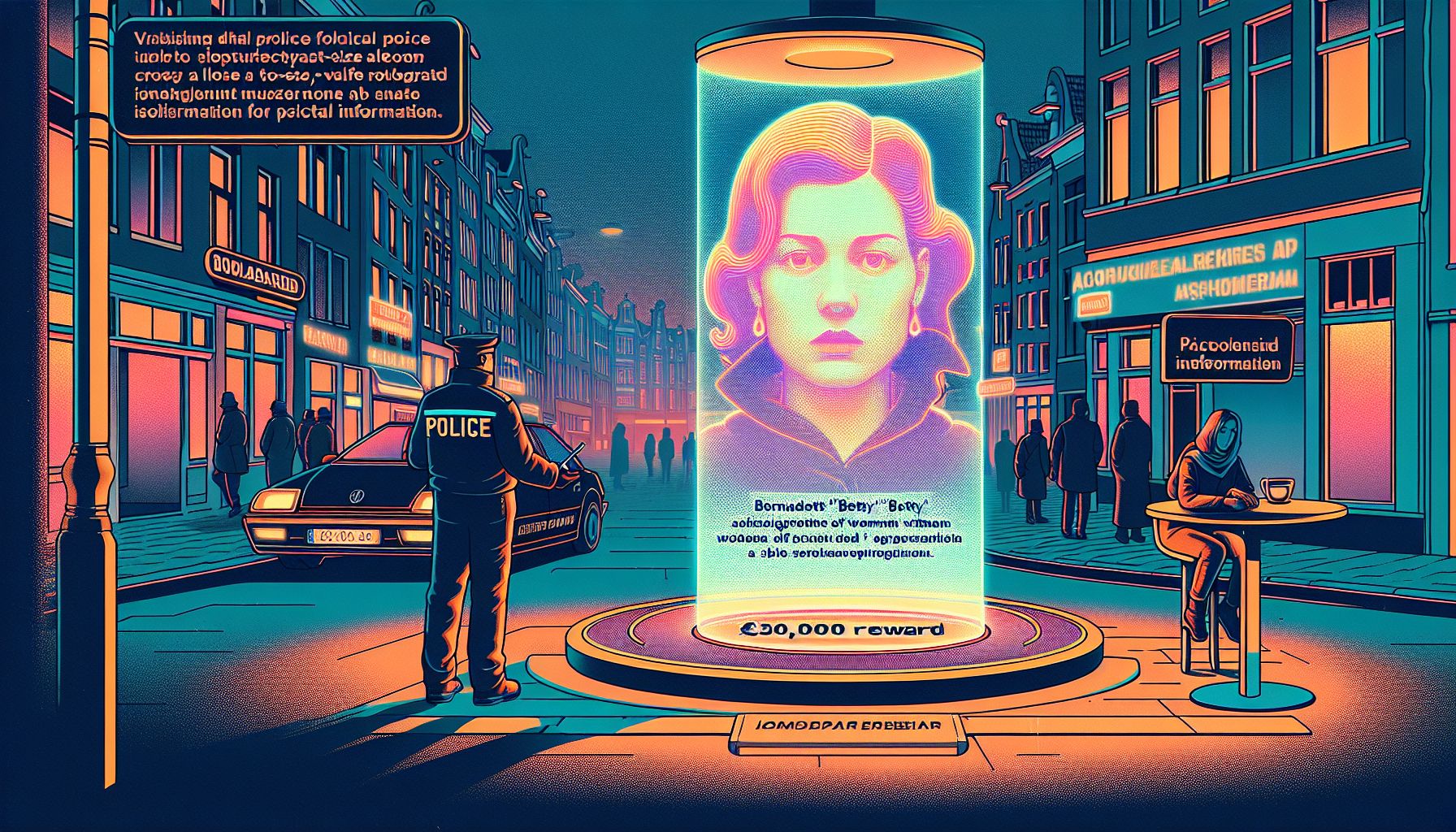Amsterdam Police Deploy Hologram to Solve 15-Year-Old Murder Case

Amsterdam, Monday, 11 November 2024.
Dutch authorities have unveiled a groundbreaking approach to crack a cold case: a lifesize hologram of Bernadett ‘Betty’ Szabó, a sex worker murdered in 2009. Displayed in Amsterdam’s Red Light District, this innovative technique aims to jog memories and encourage witnesses to come forward, offering a €30,000 reward for crucial information.
Harnessing Technology for Justice
The Dutch police’s use of hologram technology marks a significant leap forward in investigative methods. The life-size hologram of Bernadett ‘Betty’ Szabó is designed not just as a technological marvel but as a strategic tool to humanize the victim and evoke empathy from potential witnesses. Benjamin van Gogh, the coordinator of the Amsterdam Wanted and Missing Persons Team, emphasized the project’s goal to create a personal connection with passers-by, potentially motivating them to share any information they might have withheld for over 15 years[1][2].
The Mechanics Behind the Hologram
The hologram, a product of cutting-edge 3D visualization technology, is not merely a static image. It interacts with its environment—knocking on windows and inscribing the word ‘help’ on fogged glass—to stimulate viewers’ memories and emotions. This dynamic representation includes Szabó’s distinctive dragon tattoo, a detail intended to make the hologram as realistic and recognizable as possible. Such advancements in technology highlight a new frontier in cold case investigations, making it an essential tool in modern policing[3][4].
A Collaborative Effort for Closure
This initiative is the result of collaborative efforts between the Amsterdam police and Szabó’s family, ensuring sensitivity and dignity in the campaign[5]. The police have also increased the reward for information leading to the resolution of the case to €30,000, hoping to incentivize those who may have been silent out of fear or indifference. Eline Roovers, a spokesperson for the Amsterdam Police, highlighted that perpetrators often confide in others; therefore, there are likely people with crucial information[2][6].
A Broader Impact
Beyond this individual case, the use of holograms could revolutionize how law enforcement agencies approach unsolved crimes. By humanizing victims and using technology to reach the public innovatively, authorities can foster a more engaged and responsive community. This case serves as a potential template for other jurisdictions grappling with cold cases, where conventional methods have stalled[7].

